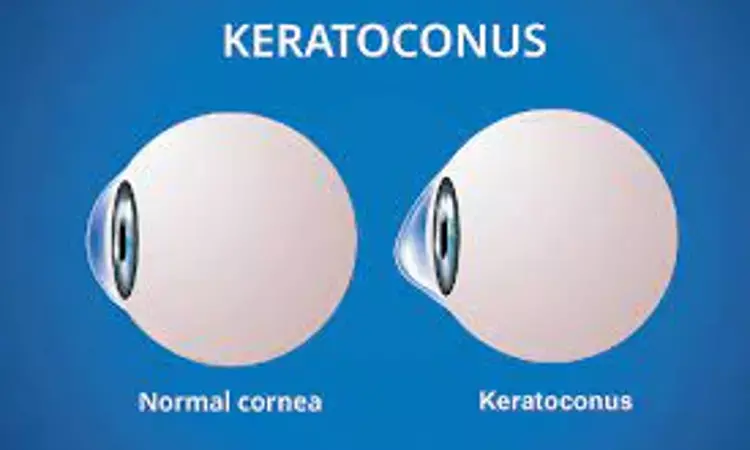- Home
- Medical news & Guidelines
- Anesthesiology
- Cardiology and CTVS
- Critical Care
- Dentistry
- Dermatology
- Diabetes and Endocrinology
- ENT
- Gastroenterology
- Medicine
- Nephrology
- Neurology
- Obstretics-Gynaecology
- Oncology
- Ophthalmology
- Orthopaedics
- Pediatrics-Neonatology
- Psychiatry
- Pulmonology
- Radiology
- Surgery
- Urology
- Laboratory Medicine
- Diet
- Nursing
- Paramedical
- Physiotherapy
- Health news
- Fact Check
- Bone Health Fact Check
- Brain Health Fact Check
- Cancer Related Fact Check
- Child Care Fact Check
- Dental and oral health fact check
- Diabetes and metabolic health fact check
- Diet and Nutrition Fact Check
- Eye and ENT Care Fact Check
- Fitness fact check
- Gut health fact check
- Heart health fact check
- Kidney health fact check
- Medical education fact check
- Men's health fact check
- Respiratory fact check
- Skin and hair care fact check
- Vaccine and Immunization fact check
- Women's health fact check
- AYUSH
- State News
- Andaman and Nicobar Islands
- Andhra Pradesh
- Arunachal Pradesh
- Assam
- Bihar
- Chandigarh
- Chattisgarh
- Dadra and Nagar Haveli
- Daman and Diu
- Delhi
- Goa
- Gujarat
- Haryana
- Himachal Pradesh
- Jammu & Kashmir
- Jharkhand
- Karnataka
- Kerala
- Ladakh
- Lakshadweep
- Madhya Pradesh
- Maharashtra
- Manipur
- Meghalaya
- Mizoram
- Nagaland
- Odisha
- Puducherry
- Punjab
- Rajasthan
- Sikkim
- Tamil Nadu
- Telangana
- Tripura
- Uttar Pradesh
- Uttrakhand
- West Bengal
- Medical Education
- Industry
Keratoconus specific IOL formulas may lower refractive mean numerical errors in patients with keratoconus after cataract surgery

Keratoconus-specific IOL formulas may lower refractive mean numerical errors in patients with keratoconus after cataract surgery suggests a new study published in the Journal of Refractive Surgery
A study done to assess the performance of multiple intraocular lens (IOL) formulas in eyes with keratoconus.
Eyes with stable keratoconus scheduled for cataract surgery with biometry measurements on the Lenstar LS900 (Haag-Streit) were included. Prediction errors were calculated using 11 different formulas, including two with keratoconus modifiers. Primary outcomes compared standard deviations, mean and median numerical errors, and percentage of eyes within diopter (D) ranges across all eyes with subgroup analysis according to anterior keratometric values.
Results:
Sixty-eight eyes from 44 patients were identified. In eyes with keratometric values less than 50.00 D, prediction error standard deviations ranged from 0.680 to 0.857 D. Percentages of eyes within ±0.50 D of target ranged from 57.89% to 73.68% with no statistical differences among formulas. In eyes with a keratometric value of more than 50.00 D, prediction error standard deviations ranged from 1.849 to 2.349 D and were not statistically different with heteroscedastic analysis; percentages of eyes within ±0.50 D of target ranged from 0% to 18.18% with no statistical differences among formulas. Only keratoconus-specific formulas (Barrett-KC and Kane-KC) and the Wang-Koch axial length adjustment version of SRK/T resulted in median numerical errors not significantly different than 0, regardless of keratometric values.
In keratoconic eyes, IOL formulas are less accurate than in normal eyes and result in hyperopic refractive outcomes that increase with steeper keratometric values. Using keratoconus-specific formulas and the Wang-Koch axial length adjustment version of SRK/T for axial lengths of 25.2 mm or greater improved IOL power prediction accu
Reference:
Kozhaya K, Chen AJ, Joshi M, Kenny PI, Koch DD, Fram N, Weikert MP, Wang L, Khandelwal SS. Comparison of Keratoconus Specific to Standard IOL Formulas in Patients With Keratoconus Undergoing Cataract Surgery. J Refract Surg. 2023 Apr;39(4):242-248. doi: 10.3928/1081597X-20230124-01. Epub 2023 Apr 1. PMID: 37040215.
Dr. Shravani Dali has completed her BDS from Pravara institute of medical sciences, loni. Following which she extensively worked in the healthcare sector for 2+ years. She has been actively involved in writing blogs in field of health and wellness. Currently she is pursuing her Masters of public health-health administration from Tata institute of social sciences. She can be contacted at editorial@medicaldialogues.in.
Dr Kamal Kant Kohli-MBBS, DTCD- a chest specialist with more than 30 years of practice and a flair for writing clinical articles, Dr Kamal Kant Kohli joined Medical Dialogues as a Chief Editor of Medical News. Besides writing articles, as an editor, he proofreads and verifies all the medical content published on Medical Dialogues including those coming from journals, studies,medical conferences,guidelines etc. Email: drkohli@medicaldialogues.in. Contact no. 011-43720751


